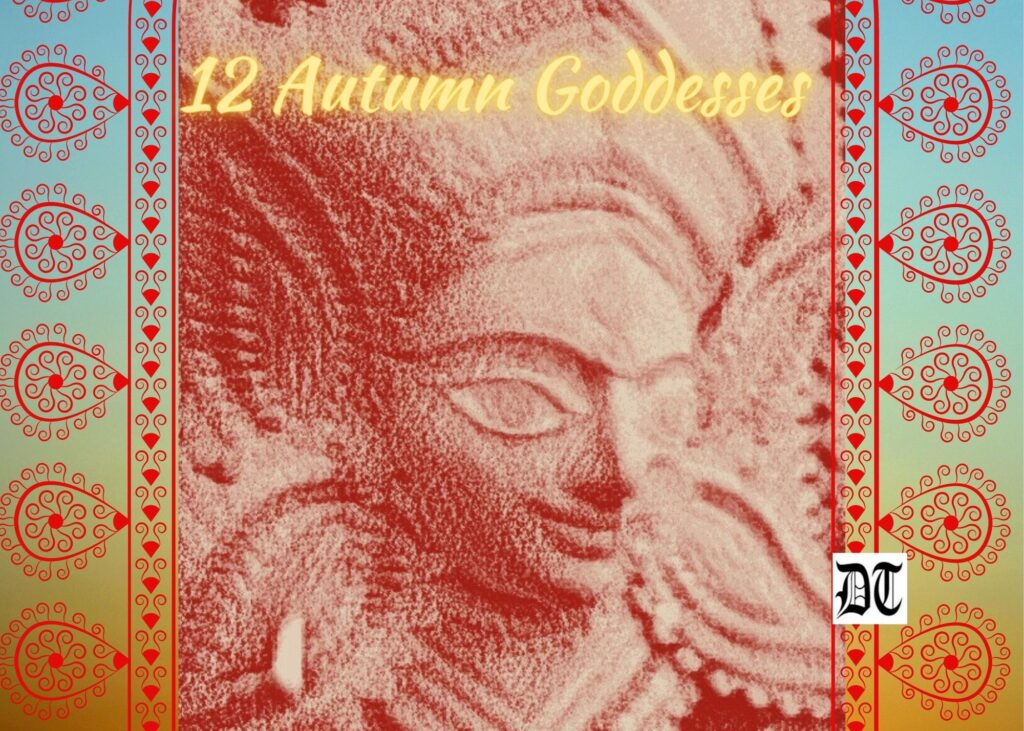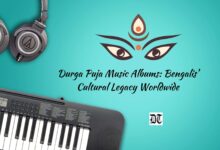Far from the madding crowd and the razzmatazz of Kolkata, where Durga Puja, or any other puja, is more about pomp and show, the reporter Mallika’s sister visited Gorjangal, on the outskirts of Shantiniketan. Here’s a report – an exclusive Special Feature for Different Truths.

For most of us in Kolkata, the joy of pandal hopping is enhanced manifold by the razzmatazz and several thousands of twinkling lights and glares from halogens. The crass commercialisation and the war of the corporate houses, flush with trophies and awards, have taken away the last dreg of spirituality from the various Durga Puja pandals.
The twinkling-blinking lights, thousands of happy faces, innumerable food stalls, the colour and cacophony, in fact the entire fanfare brings, about a crazy, maddening celebrations, somewhat brute under all the lipsticks and mascaras. Others say that it gives a magical touch to the otherwise dreary and mundane lives of city dwellers. They jostle and nudge along everyday in crowded buses and local trains. Festivity too isn’t much different for them.
The puja committees are often found vying with each other for the coveted awards. This rush to excel in themes and decorations has in some ways robbed the true spirit of the festival. The simplicity, home-like ambience and spontaneous participation of the local residents have been replaced by the glitz, glamour and the larger-than-life presence of the sponsors. The commercialisation of the Durga Puja is something that pains a certain section of people, like my father, who often misses the low key, sincere celebration that is lost in the grandiosity of Kolkata pujas.
My sister, Ratnaboli Ray and her family, decided to spend the puja in peace, far from the madding crowd. They visited a rather nondescript, simple puja in a place called Gorjangal. It is situated on the banks of river Ajay, 35 kms from Shantiniketan. It is believed to have been started by some Raja Surath, over one thousand years back, following orders of a great sage, Mahamuni Medha. It is called Medhashram. It is also called Supto Peethasthan (latent place of pilgrimage). It has been covered by deep, dense forest.
Here, the modern form of Durga Puja started under Yogiraj, in 1992, who had dreamt of this place covered in ruins and dense forests. Almost 3000 people flock to see the deity and are served Bhog or Seva, an offering of khichuri (porridge), vegetables, etc. The place has solar light installed. A far cry from the gala showbiz that one witnesses in Kolkata, this place welcomes Durga/Uma with sincerity and devotion and is definitely on my travel wish list next year.
Picture design Anumita Roy, Different Truths





 By
By

 By
By
 By
By
Yes, its so true, the city has lost the magic touch , the fervor ,the authenticity of the rituals, the simple yet wonderful feeling of togetherness is lost. Mallika, very nice article. It feels good to know that the tradition still exists and is practiced in certain places with the sincerity and devotion that ‘Durga Pujo’ demands.